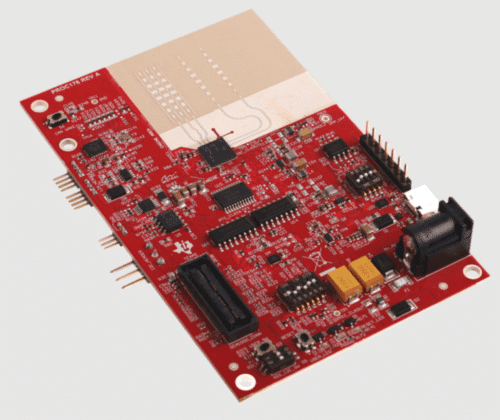The reference design establishes a baseline for basic radar applications, enhancing car safety with blind spot detection up to 120 meters.

Advanced Driver Assistance Systems (ADAS) in vehicles provide significant quality-of-life and safety enhancements, transforming mundane driving into a safer and more manageable experience. A critical component of ADAS is the Blind Spot Detection (BSD) system, which monitors the rear corners of a vehicle to alert drivers to the presence of other vehicles approaching from behind in adjacent lanes. This feature crucially increases safety by identifying obstacles not visible in side-view mirrors, thereby helping to prevent collisions during lane changes. BSD systems utilize a variety of sensors to continuously detect obstacles in the vicinity and track their positions and velocities over time. The reference design from Texas Instruments (TI) establishes a baseline for corner radar applications, supporting entry-level blind spot detection (BSD) capabilities with the AWRL1432BOOST-BSD evaluation module. It enables users to determine and monitor the position (in the azimuthal plane) and speed of objects at distances up to 120 meters.
Frequency-modulated continuous-wave (FMCW) radars are particularly effective in accurately measuring distances and relative velocities of obstacles and other vehicles, making them invaluable for autonomous vehicle functions like lane change assist (LCA) and rear cross-traffic alert (RCTA), as well as for car safety features such as autonomous braking and collision avoidance. A significant benefit of radar technology over the camera and Light Detection and Ranging (LIDAR) systems is its relative immunity to adverse environmental conditions, including rain, dust, and smoke. Additionally, FMCW radars can operate effectively in complete darkness and bright daylight without glare, offering advantages over ultrasound systems with their longer range and quicker signal transmission times.
The design draws from the mmWave demo (mmwave_demo) processing chain included in the mmWave low-power software development kit (MMWAVE-L-SDK). It features a BPM-MIMO scheme and incorporates additional functionalities such as radar cube compression, maximum velocity extension, dynamic clutter removal, and a group tracker.
Today’s essential Blind Spot Detection (BSD) sensors typically need a radar sensor to detect and track a vehicle moving at 130 km/h at a distance of up to 120 meters. To achieve this, high-gain antennas providing an additional 13dB of gain are used on the AWRL1432BOOST-BSD to extend the maximum detection range to 120 meters. Additionally, the demonstration includes frame reconfiguration that alternates between “slow” and “fast” frames in the RF front end. This feature allows the detection of speeds up to ±144 km/h.
Modern vehicle architectures often require two CAN-FD interfaces for each BSD sensor to facilitate communication between sensors and the central ECU. The AWRL1432BOOST-BSD comes equipped with an integrated CAN-FD transceiver, which is a model for system designs that need a second CAN-FD. The TCAN4550-Q1 connects the CAN bus to the AWRL1432 via an SPI interface.
TI has tested this reference design. It comes with a bill of materials (BOM), schematics, assembly drawing, printed circuit board (PCB) layout, and more. The company’s website has additional data about the reference design. To read more about this reference design, click here.








